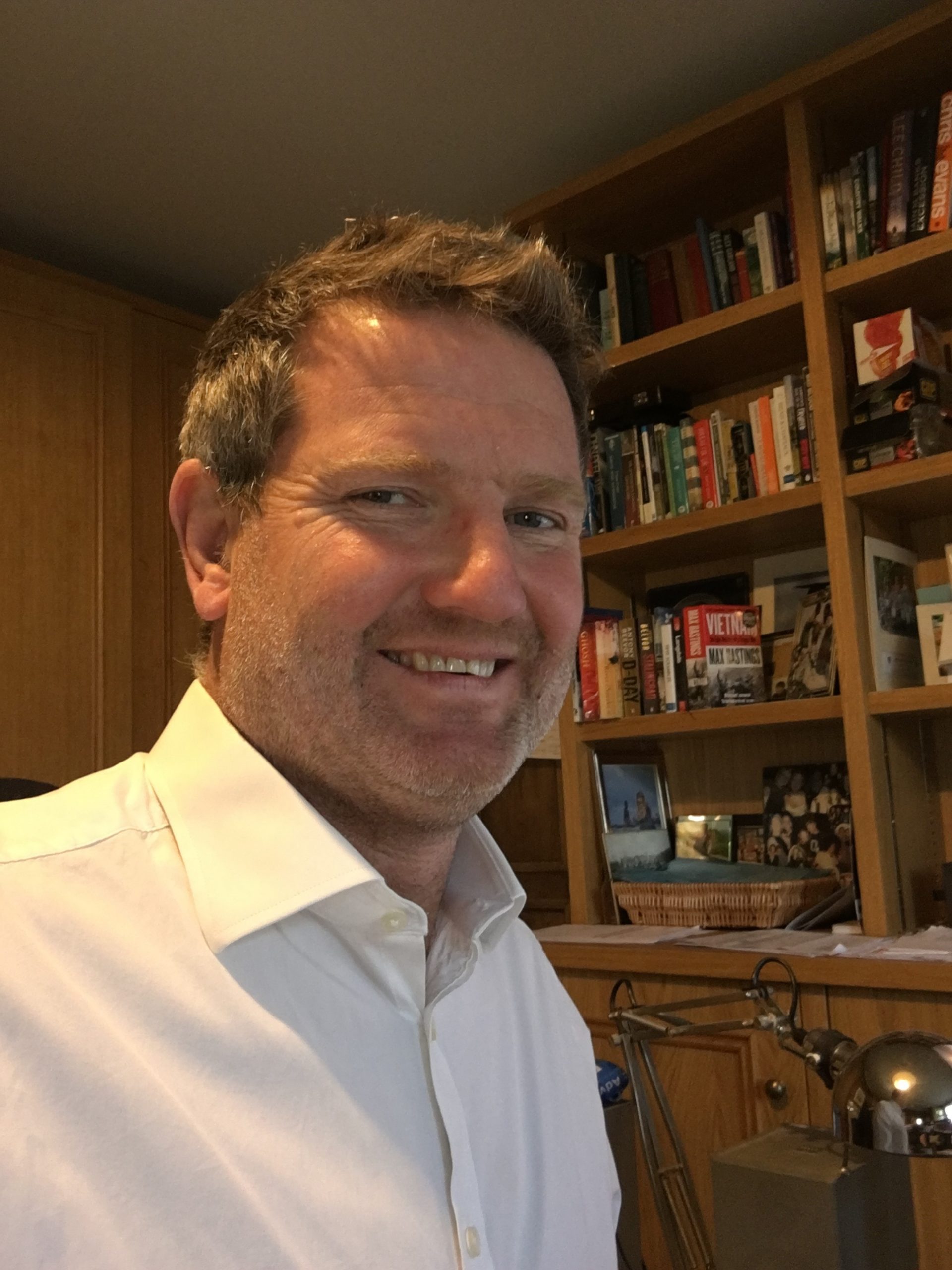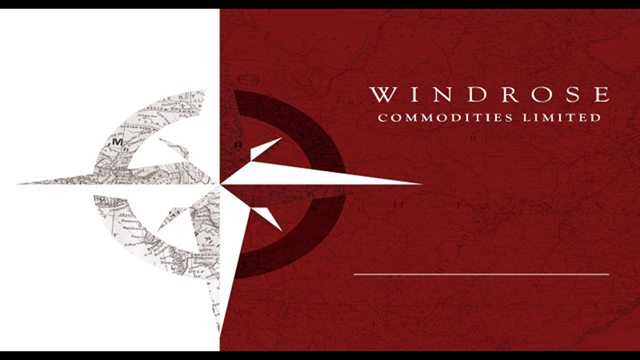Edgefolio Spotlight: Steve Reece
 This week we present Steve Reece, founding partner in Windrose.
This week we present Steve Reece, founding partner in Windrose.
Windrose is an Alpha generating, non-directional, commodity arbitrage fund with a Chinese focus headquartered in Hong Kong.
What was the inspiration for launching your fund?
Greg and I had the vision to create a vehicle that would allow ordinary, non-commodity specialist investors, access to the consistent returns offered from a non-directional commodity arbitrage strategy. This field had traditionally been an exclusive reserve for commodity merchants who had used the strategy as a monetisation mechanism for their physical books. Greg and I had run similar strategies in the past we knew that the strategy could stand alone without the need for a complete physical book infrastructure and would fit into a normal regulated fund structure. We felt that the non-correlated, absolute return nature of the strategy would appeal to those looking for something a bit niche: a bit different from the normal, to complement their suite of other more traditional investments.
Tell us about some of your most profitable trades
If we take a look back over the last 10 years, on average there are around 2 major dislocations in price per year. 2020 has been peculiar in many ways, not least as it provided more major dislocations than normal due to the large outright price moves of many commodities as different speeds of recovery from the pandemic in different geographies, created price divergences. Add into that mix a volatile FX market which has exacerbated the relative moves, giving us plenty to talk about without looking too far backwards. My favorite trade this year is Silver. This has been a fascinating trade as it played out in the investment market, the physical market and the FX market and only when all these factors are considered does it make perfect sense. When the gold price exploded in the midst of the pandemic as investors sought security, silver failed to respond with the same verve. Not until much later did the silver price move higher and when it did so the underlying physical markets of silver dried up. Industrial users stopped buying as did the physical investors of Asia. The upward price momentum was kept intact by the paper demand expressed in spot silver or on the US Comex market. This created a huge Comex premium; something we had not seen before. Being long in China at a discount, and short the Comex market was an obvious trade at this point. As in many physical markets, the unwind takes time as the real metal has to move to rebalance from discount to premium markets. Silver is no different and over the course of late summer, we started to see Chinese exports of silver entering markets where it is not normally seen, clearly signalling that the movement was indeed happening. At the same time, the CNY assent the USD picked up, forcing the CNY denominated silver longs up in value. The 4% dislocation in price happened quickly, whilst the convergence took a little longer. This is a great example of the non-directional style of trade that Windrose is able to seize and run. There is a much larger write up on this trade, as well as other similar trades, in the Windrose data room on FundPortal, which is a much convenient and easy to use platform.
“We like to understand why people are invested in Windrose and what they expect from us and given the unique nature of what we do we can be a completely open book.”
Tell us about an investment decision that changed the course of your fund.
In a similar way to the Silver trade discussed above, just after launch, a similar opportunity expressed itself in Aluminium. This time the catalyst for the furious price move was not a virus, but something much more man-made: sanctions. The market moved higher when the Trump administration sanctioned the largest non-Chinese producer, Rusal of Russia. As the LME price predictably reacted with fury to the prospect of a large amount of available units being withdrawn, the self-contained market of China remained ambivalent. Western prices at a huge premium to Chinese prices saw the predictable flow of metal from China to the west and in particular Asia, displacing other units which came into exchange stockpiles at a frightening rate. As the physical metal flowed so the differential eroded and when finally the US sanction proposal was shelved, the markets all but realigned perfectly. For Windrose this was a gift in its inception year, giving Windrose a much-needed flying start.
Is it still important to know an investor on a personal level before you accept their investment?
We like to understand why people are invested in Windrose and what they expect from us and given the unique nature of what we do we can be a completely open book. We are still small so keeping on top of investor relationships is not onerous; we like to keep investors engaged and informed as much as possible. For us keeping each investor engaged has helped us keep and grow our investor base and whilst we are still young and have much to do as a firm, keeping those investors who started the journey with us throughout that journey is really important and fulfilling.
How would you best describe your firm’s approach to technology and innovation?
Even in the difficult to digitalise commodity arbitrage field, technology is evolving. Execution across exchanges, across geographies and multi-entity, multi-currency is now offered on various platforms. This has certainly led to reduced slippage for those executing such trades. However one of the great joys of commodity arbitrage is that it is difficult to entirely remove human involvement such is the array of inputs and potential outcomes. That said even this market-place will continue to develop and for us, the introduction of more open Chinese markets will surely increase the ability to use technology. The more barriers to trade come down, the more machine interaction will surely come along. However, let us be realistic on how long that may be in the waiting as we do not believe that China is about to give unfettered access to their financial markets to all and sundry.
How has Covid-19 impacted your day-to-day operations?
We were so fortunate in that we had a disaster recovery exercise in January, pre-lockdown, where all our problems on global access for all the employees were ironed out. So despite people being stuck in various parts of the world for prolonged periods, our operations have been unaffected. However, maybe slightly controversial and certainly old-school, I do believe that in trading remote working all the time is suboptimal. I find that in the right environment, managed correctly, traders feed off each other. Whilst this may be different for a perfectly mechanised operation, for Windrose due to the nature of commodity arbitrage and the array of outcomes possible, we have seen many a mere idea blossoming into a great strategy due to the confidence that comes from an open face to face discussion between us. So whilst Windrose operates smoothly as it is, despite constant Video conferencing, I would like to get everyone back together and under the same roof as soon as practically possible.
Do you find it easier or more difficult to connect with prospects? Why?
This year has been difficult to raise money from new investors. Video chats go some way to bridging the divide, but nothing replaces face to face time. For a small operation like Windrose that is harder still as on-site DD has become impossible due to Hong Kong closing its borders. We understand that any investor would want to come into the office and meet the principles, kick the tyres examine the trading systems and records. All these activities have become that much harder without the ability to pop into our office. We dearly look forward to welcoming people back to our offices in 2021.
“The arbitrage; the differential between the prices set domestically by the world’s latest consumer of almost everything and those set in the west, is the best leading indicator to the price action of those commodities in the medium term that I am aware of, bar none.”
What is your outlook for the global economy in 2021?
For Windrose, with our non-directional approach to markets, it matters little to us where markets go, so long as they move. Information and local supply and demand dynamics will continue to affect the local markets for commodities as they always have done. Physical traders will extract those differences by moving units from discount markets to premium markets, as they have always done. And regions will grow or shrink at different rates exacerbating those differences in prices. Foreign Exchange will also continue to play its part in the relative value of commodities. But we are not FX traders nor commodity directional traders: we are relative value specialists. For us, the remarkable growth in commodity demand in China continues to be the dominating factor that creates price divergence. China’s continued dominance in commodities seems inevitable and their pricing power will continue to expand because of that dominance. When China stops buying, prices stop rising. All of which leads me to a final thought to share. The arbitrage; the differential between the prices set domestically by the world’s latest consumer of almost everything and those set in the west, is the best leading indicator to the price action of those commodities in the medium term that I am aware of, bar none.
Thank you, Steve, for taking the time to talk with us. We wish you the best of luck growing Windrose!

Want to discuss how we can help you? Submit your interest and we promise to come back with a helping hand.
If you want to learn more about Steve, you can reach out to him directly on his Linkedin Profile here.
We are looking for Fund Managers, Allocators, and Placement Agencies/3rd Party Marketers who are interested in sharing their story with the world and want to get exposure to many eyes in the industry.
If you want to be a part of this, just click here and enter in your details.
We look forward to hearing from you!
The Edgefolio Team.